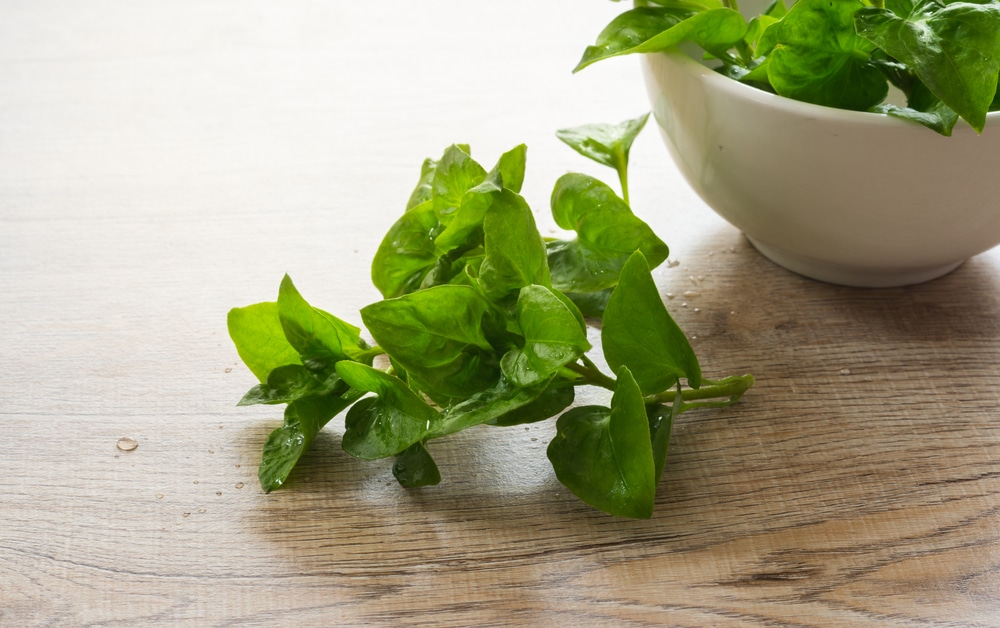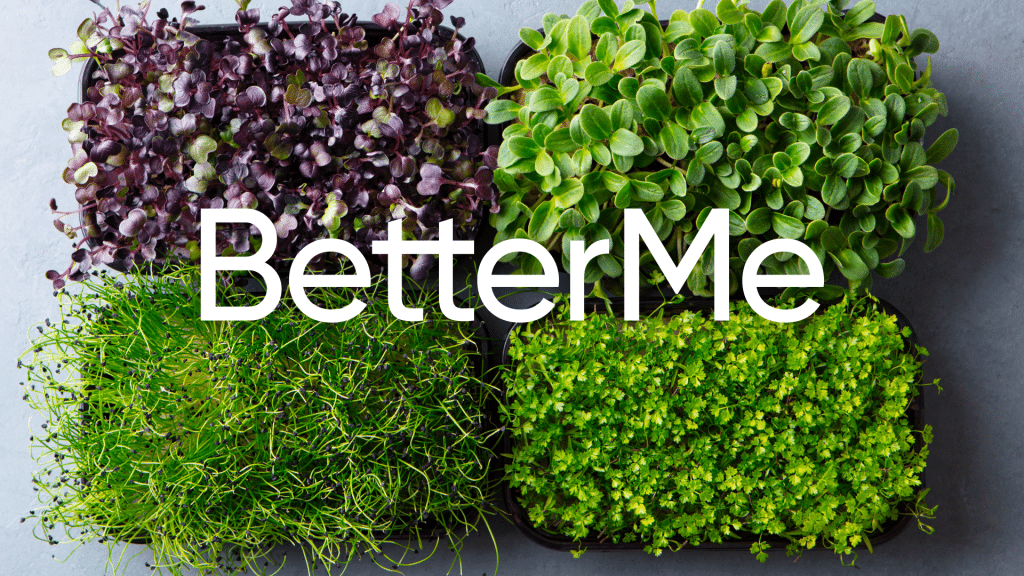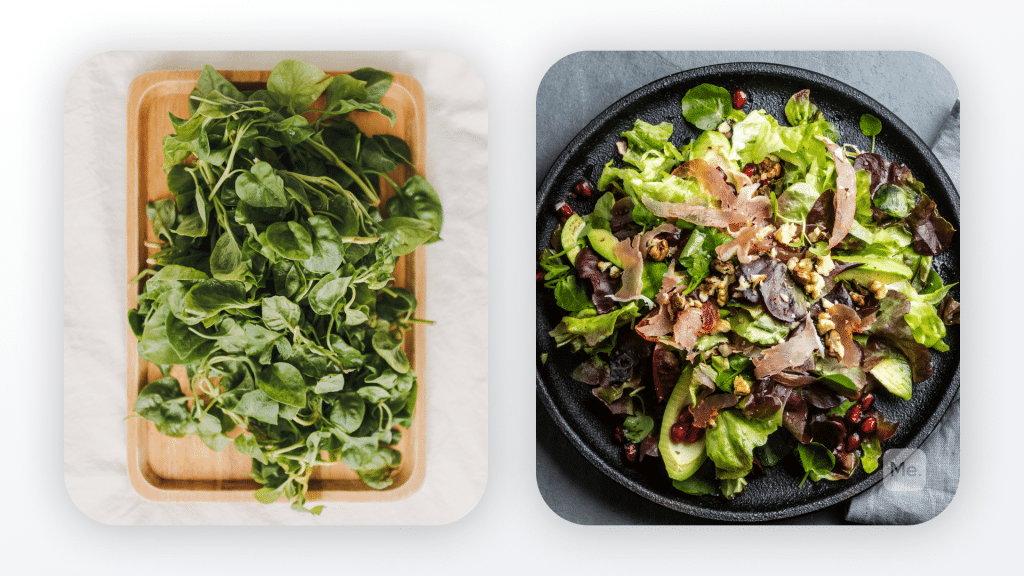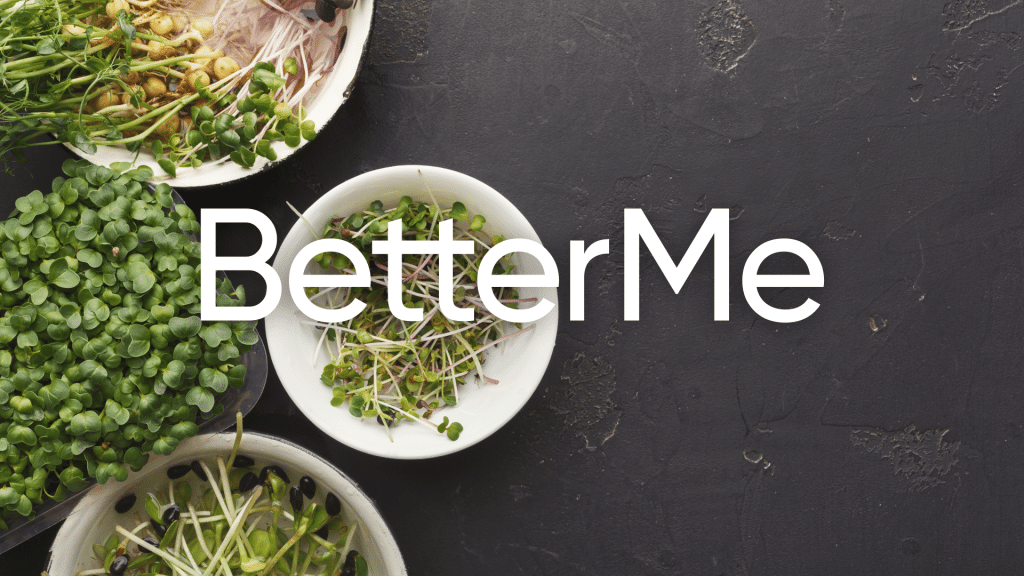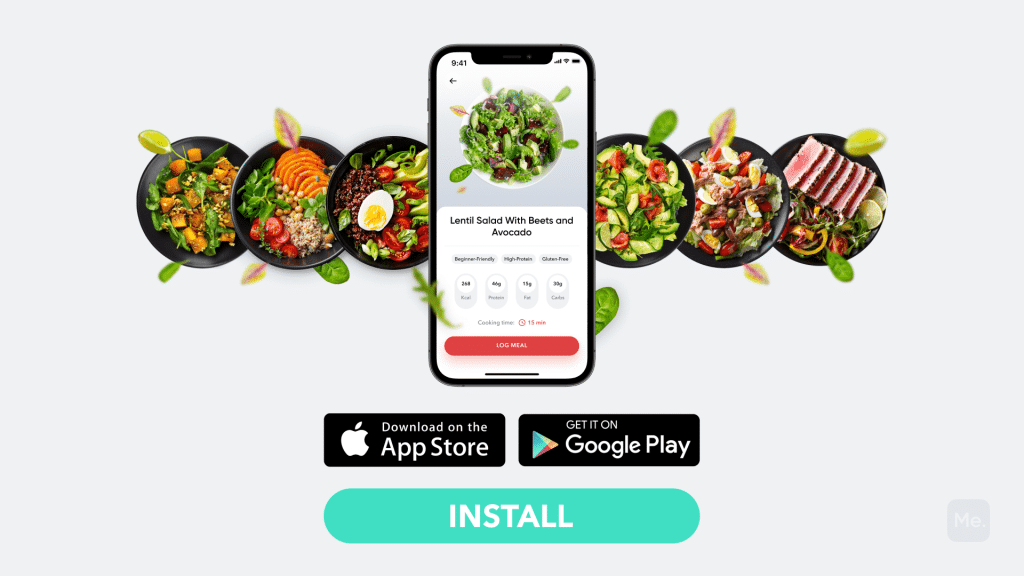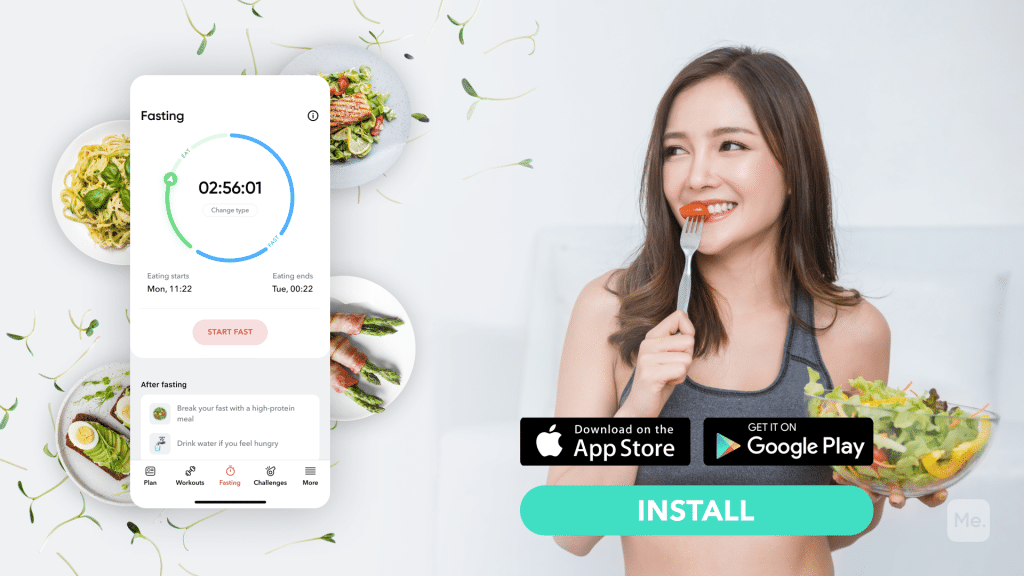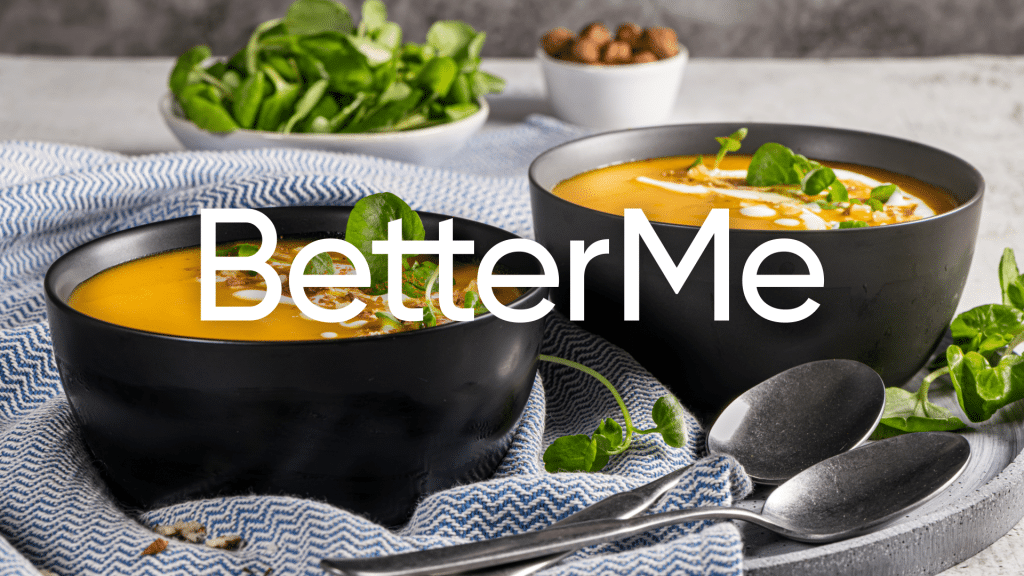Watercress is a leafy green vegetable that is related to mustard greens, cabbage, and broccoli. It has a peppery flavor and is often used in salads, sandwiches, or soups. Once considered a weed, watercress is an often overlooked vegetable that is packed with nutrients. This article looks at the potential health benefits of watercress, what it contains, where to get it, and some warnings concerning its use.
Watercress Nutrition Facts
One cup (34 grams) of watercress contains the following (18):
- Calories: 4
- Carbs: 0.4 grams
- Protein: 0.8 grams
- Fat: 0 grams
- Fiber: 0.2 grams
- Vitamin A: 6% of the Daily Value (DV)
- Vitamin C: 16% of the DV
- Vitamin K: 71% of the DV
- Calcium: 3% of the DV
- Manganese: 4% of the DV
Health Benefits Of Watercress
Watercress is part of the cruciferous vegetable family. Like its relatives broccoli, kale, and cabbage, watercress is thought to have many of the same benefits for your health.
Here are some of the possible watercress benefits:
Lower Risk Of Chronic Diseases
Oxidative stress is associated with several chronic illnesses including heart disease, cancer, and diabetes (10).
Because of its antioxidant content, watercress is thought to help prevent these illnesses or their recurrence. A diet rich in antioxidant-rich foods like watercress has been shown to reduce the risk of chronic diseases such as heart disease, diabetes, and cancer (13).
Watercress is higher in antioxidants than other vegetables. Watercress also has a high concentration of an antioxidant called falcarinol, which may have unique anti-inflammatory properties against colon cancer cells (4).
Glucosinolates, which are activated in compounds called isothiocyanates in the body, are also thought to have anti-cancer benefits (13).
Beneficial For Heart Health
Watercress’ nutrition profile makes it a heart-friendly vegetable. It contains the following nutrients that can boost heart health (14):
- Fiber – Fiber can reduce high cholesterol levels, regulate blood sugar, and lower blood pressure.
- Vitamin K – A type of vitamin known as K2 is essential to make proteins that are involved in blood clotting.
- Vitamin C – Vitamin C helps lower inflammation which can contribute to certain chronic diseases like cancer or cardiovascular disease.
- Manganese – A type of mineral called manganese helps keep your blood pressure levels healthy.
Read More: Facts About Water Chestnuts, Calories, Health Benefits And Side Effects
Aids In Weight Loss
Watercress contains fiber, which makes it an important food for weight loss or maintaining a healthy weight.
The Harvard School of Public Health states that soluble fiber can lower cholesterol and improve lipid profiles. Soluble fibers can also slow digestion, which can help you feel full longer and prevent overeating (6).
Manages Blood Sugar Levels
Watercress is known to contain fiber, which is important for blood sugar health (6).
Fiber slows down the digestion of carbohydrates, which means they are absorbed more slowly by the body instead of all at once. This can prevent spikes in blood sugar levels (6).
Watercress can also be a good source of chromium – this mineral helps insulin efficiently transport glucose from your blood into your cells to be used for energy. Chromium deficiency has been linked to type 2 diabetes (3).
Lowers Blood Pressure
Many watercress health benefits are related to its nutrients with the ability to help lower blood pressure which can be especially important if you suffer from hypertension or high blood pressure. Watercress is rich in potassium, which research has shown may also help lower blood pressure levels (11).
May Improve Bone Health
Vitamin K is important for bone health. It helps the body conserve calcium, which prevents bones from deteriorating (17).
Studies have shown that older adults with low vitamin K intake are more likely to suffer hip fractures than those who get enough of the vitamin in their diets (5). Watercress may also have benefits for bone health due to its manganese content. Deficiency in this mineral has been linked with osteoporosis (8).
Supports Immunity
Watercress is a known antioxidant, which means it is capable of neutralizing free radicals. Free radicals can damage cells and lead to disease – so having antioxidants in your diet can help prevent illness (2).
Antioxidants are also thought to help the immune system by supporting the function of white blood cells, which fight off foreign invaders like bacteria or viruses (2).
Antioxidants like vitamin C and beta-carotene (vitamin A) are also needed for the production of white blood cells (2).
Improves Skin Health
Watercress may have benefits for skin health due to its high vitamin C content. Vitamin C can neutralize free radicals that damage collagen, slowing signs of aging (16).
Vitamin C is also necessary for collagen synthesis, which keeps the skin strong and firm. It may also help protect your skin against sun damage by fighting oxidative stress (16).
BetterMe app is a foolproof way to go from zero to a weight loss hero in a safe and sustainable way! What are you waiting for? Start transforming your body now!
Enhance Athletic Performance
Watercress’ high nitrate content is thought to boost athletic performance. Nitrates are converted into nitric oxide by the body, which helps widen blood vessels, allowing more oxygen-rich blood flow to muscles. This might make watercress an excellent food for before or after workouts (9).
Rich In Carotenoids And Vitamin C, Which May Protect Eye Health
Watercress is rich in two powerful antioxidants, beta-carotene and vitamin C. Antioxidants help fight oxidative stress – damage to cells caused by free radicals. Oxidative stress can contribute to macular degeneration, cataracts, and other eye diseases, so antioxidants may help prevent these issues (1).
Enhances Brain Function
Watercress health benefits may also extend brain health. The high vitamin K content in watercress is thought to support brain function by promoting the growth of new neurons. Additionally, it may help protect against Alzheimer’s disease or dementia by preventing amyloid plaques from forming in the brain (17).
Watercress Side Effects
There are a few side effects to watch out for when consuming watercress:
Interaction With Blood Thinning Medication
Watercress may have blood thinning effects, which means it can increase your risk of bleeding during and after surgeries. Talk to your doctor before including watercress in your diet if you are taking blood-thinning medication or daily aspirin (19).
Increased Risk Of Stomach Cancer
Watercress contains high levels of nitrite that can be potentially harmful. High levels of nitrates (not necessarily from watercress specifically) have been linked with an increased risk of stomach cancer, especially when accompanied by low consumption of foods containing vitamin C (15). Watercress also contains vitamin C, but make sure to include plenty of other sources of vitamin C in your diet, like bell peppers or strawberries, when eating watercress to reduce this risk.
How To Eat Watercress
Despite having a few risks, watercress is a highly nutritious and versatile leafy green. Here are a few ways you can eat it:
As A Sandwich Garnish:
Watercress adds an extra kick of flavor and nutrients to sandwiches. Try laying it between your favorite bread or veggies, like turkey and avocado on whole wheat bread or cucumber slices.
In Salads:
Create a salad by tossing watercress with arugula, spinach, and other leafy greens. Top with your choice of veggies, fruit, seeds, and even meat for a balanced meal.
Add It To Soups:
Watercress pairs perfectly with creamy vegetable soups like broccoli or potato soup. It can also be used in stir-fry – just toss it in right before serving to keep the leaves bright green.
Read More: 72-Hour Fast: Benefits And Dangers Of A Long Water Fast
Watercress Recipes
There are tons of ways to add watercress into your diet! Here are a few easy recipes that show its delicious versatility:
Lamb Tagliata With Watercress And Tomatoes (7)
This is a traditional Italian dish that would normally make use of rocket, parmesan and thinly sliced beef to deliver a rush of delicious awesomeness. However, this version takes things even up a notch to improve your experience. Here’s how you make it:
Ingredients:
- Handful fresh rosemary, needles chopped
- 2 tablespoons extra-virgin olive oil
- 4 thick boneless lamb steaks or steaks cut from lamb rump (about 450g)
- 250g baby plum tomato
- 1 tablespoon redcurrant jelly
- 2 tablespoons balsamic vinegar
- 2 tablespoons caper, drained and rinsed
- 100g bag watercress, thick stems removed
- 100g feta cheese, crumbled
- good crusty bread, to serve
Instructions:
- Start by rubbing 1 tablespoon of oil and the rosemary of the lamb and let it marinate for about 30 minutes at room temperature.
- Next, heat a frying pan until it turns very hot. Wipe off most of the rosemary from the lamb then season the steaks using plenty of flaky salt and freshly ground pepper.
- Place the steaks and the tomatoes in the pan and sear the meat for about 2 minutes until one side turns golden. Turn and continue cooking for 2 more minutes to give the lamb a pink color. Transfer the meat and tomatoes to a plate and let it rest.
- Remove the pan from the heat and spoon in the redcurrant jelly, also pouring in the vinegar and remaining oil. Whisk to make a warm dressing. Add any juices from the lamb alongside the capers.
- Slice the lamb thickly at an angle and spread it over a large platter with the tomatoes and watercress. Crumble some cheese over top.
- Spoon some warm dressing over the lamb and serve with the crusty bread.
This recipe is courtesy of bbcgoodfood.com
Intense sweat sessions, working weight loss tips, lip-smacking recipes come in one package with the BetterMe app. And all of it is at your fingertips, start transforming your life now!
Salmon En Croute With Watercress (12)
A bed of herby cream cheese, filet of salmon and watercress. See where this is going? Here’s how you make it:
Ingredients:
- 1 cup watercress, or as desired
- ½ lemon, zested and juiced
- 1 (8 ounce) package cream cheese, softened
- 1 clove garlic, minced
- 1 teaspoon dried dill weed
- 1 teaspoon dried parsley
- 1 (17.5 ounce) package frozen puff pastry, thawed
- 2 boneless, skinless salmon filets
- 1 egg, beaten
Instructions:
- Start by preheating an oven to 375 degrees F.
- Now place the watercress in a sieve and pour some boiling water over it until it wilts. Drain on paper towels.
- Next, combine the wilted watercress with lemon zest in a small bowl. Mix the cheese, cream, dill, garlic and parsley together in a separate bowl.
- Roll out two puff pastry sheets carefully on a work surface until they become just larger than the length of salmon filets. Cut the sheets in two halves.
- Place ½ watercress mixture at the center of each separate sheet and a half cream cheese mixture over the watercress. Complete this step by centering the salmon filets on top of the cream cheese mixtures and squeeze some lemon juice over each.
- Next, brush the edges of the pastry using some of the egg.
- Fold the bottom and top of the pastry over the salmon, trimming the edges to remove any excess pastry. Use your fingers to press together and seal the pastry seams.
- Transfer the wrapped filets, seam side down to the baking sheet and brush the top using the beaten egg.
- Bake in the preheated oven for about 20 to 25 minutes until the pastry turns golden brown.
This recipe is courtesy of allrecipes.com
Watercress Steamed Meatballs (20)
This recipe delivers a delicate combination of succulent beef with a light, amazing texture and fresh flavors emanating from leafy greens. Here’s how you make it:
Ingredients:
- 1 pound beef chunk (don’t trim fat; hand-chop or ask the butcher to coarsely grind)
- ½ cup cold water
- ½ teaspoon baking soda
- ½ teaspoon ginger (grated or finely minced)
- 1 teaspoon scallion whites (finely minced)
- 1 teaspoon sugar
- 1 ⅛ teaspoon salt
- 1 tablespoon cornstarch
- 1 tablespoon vegetable oil (plus 1 teaspoon, divided)
- ¼ teaspoon sesame oil
- 2 teaspoons shaoxing wine
- ¼ teaspoon white pepper
- 1 ¼ teaspoons dried tangerine peel (coarsely ground in a mortar and pestle)
- ¼ teaspoon coriander powder
- 1 egg white
- 2 bunches fresh watercress (thoroughly washed and drained, divided)
- ¼ cup cilantro (finely chopped)
Instructions:
- Add the coarsely ground beef, baking soda and cold water in an electric mixer that’s fitted with a paddle attachment.
- Turn the mixer on slow speed and let it run for about 10 minutes. You can alternatively stir the beef and cold water using three chopsticks or a large fork for 15 minutes if you don’t have a mixer.
- Remove any meat fibers/fascia that stick to the fork or paddle during the mixing process since they can be tough and sinewy. Scrape the sides of the bowl, ensuring that all the fat and meat are fully incorporated.
- Now add the scallions,sugar, ginger, salt, cornstarch, sesame oil, 1 tablespoon vegetable oil, shaoxing wine, dried tangerine peel, white pepper, coriander powder and egg white. Stir on medium speed for about 15 minutes or vigorously by hand for 20-25 minutes.
- Stop the mixture in every 5 minute interval to remove any membranes or fiber from the paddle attachment.
- Bring a pot of water to a boil then add 1 teaspoon of vegetable oil. Blanch 1 bunch of watercress for about 30 seconds, drain it and rinse in cold water. Finely chop the watercress.
- Add the cilantro and finely chopped watercress to the meat mixture. Fold in hand until everything is well incorporated.
- Lay a bed of some fresh watercress on a heatproof plate that you’ll use for steaming.
- Portion the meat using oiled hands into 60g chunks and roll them into round meatballs.
- Set up your streamer and once the water is boiling, steam the meatballs on high for about 12 minutes.
This recipe is courtesy of thewoksoflife.com
The Bottom Line
Watercress benefits are plentiful, but there are still a few things to keep in mind when adding it to your meals. Make sure you’re including plenty of vitamin C sources in your diet and always talk to your doctor before including watercress in your diet if you have any blood disorders or take blood thinning medication.
Get your personalized
meal plan!
DISCLAIMER:
This article is intended for general informational purposes only and does not serve to address individual circumstances. It is not a substitute for professional advice or help and should not be relied on for making any kind of decision-making. Any action taken as a direct or indirect result of the information in this article is entirely at your own risk and is your sole responsibility.
BetterMe, its content staff, and its medical advisors accept no responsibility for inaccuracies, errors, misstatements, inconsistencies, or omissions and specifically disclaim any liability, loss or risk, personal, professional or otherwise, which may be incurred as a consequence, directly or indirectly, of the use and/or application of any content.
You should always seek the advice of your physician or other qualified health provider with any questions you may have regarding a medical condition or your specific situation. Never disregard professional medical advice or delay seeking it because of BetterMe content. If you suspect or think you may have a medical emergency, call your doctor.
SOURCES:
- 4 super greens for better sight (2016, discoveryeye.org)
- Antioxidants: In Depth (2013, nih.gov)
- A scientific review: the role of chromium in insulin resistance (2004, pubmed.gov)
- Chemopreventive properties of 3,3’-diindolylmethane in breast cancer: evidence from experimental and human studies (2016, nih.gov)
- Dietary vitamin K intakes are associated with hip fracture but not with bone mineral density in elderly men and women (2000, pubmed.gov)
- Fiber (n.d., harvard.edu)
- Lamb tagliata with watercress & tomatoes (n.d., bbcgoodfood.com)
- Magnesium deficiency: possible role in osteoporosis associated with gluten-sensitive enteropathy (1996, pubmed.gov)
- Nitrate ingestion: a review of the health and physical performance effects (2014, pubmed.gov)
- Oxidative Stress: Harms and Benefits for Human Health (2017, nih.gov)
- Potassium lowers blood pressure (2017, harvard.edu)
- Salmon en Croute with Watercress (n.d., allrecipes.com)
- The anti-oxidant properties of isothiocyanates: a review (2013, pubmed.gov)
- The effect of green leafy and cruciferous vegetables intake on the incidence of cardiovascular disease: A meta-analysis (2016, pubmed.gov)
- The risk of cancer as a result of elevated levels of nitrate in drinking water and vegetables in Central India (2017, pubmed.gov)
- Vitamin C (2021, nih.gov)
- Vitamin K (2021, nih.gov)
- Watercress, raw (2019, usda.gov)
- WATERCRESS: Overview, Side Effects, Precautions, INteractions, Dosing and Reviews (n.d., webmd.com)
- WATERCRESS STEAMED MEATBALLS (2020, thewoksoflife.com)
